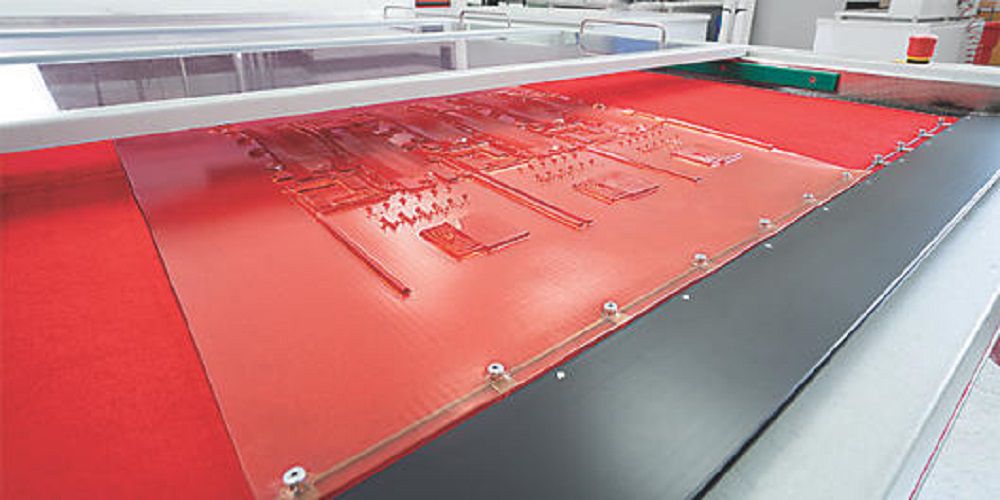Challenge: Climate change requires urgent action, bold commitments, and innovation. Finding a way to shorten the lead times for game-changing technologies and turn the long lifetimes of energy infrastructure into a net positive for the climate will require a multi-faced, collaborative approach.
Goal: Reduce greenhouse gas (GHGs) emissions 30% including sourcing 60% of electricity from renewable energy, and deliver carbon neutral operations by 2050 or sooner
Baseline: 5,380,000 MTCO2e of GHG emissions| 2.9% renewable electricity use
Reduce greenhouse gas (GHGs) emissions 30% including sourcing 60% of electricity from renewable energy, and deliver carbon neutral operations by 2050 or sooner
Roadmap to 2030
To begin working on our ten-year ambition, we will first:
01
Reduce our overall energy use by investing in Bold Energy Plan projects
02
Source low-carbon power, heating and cooling by deploying a global renewable energy strategy
03
Create low-carbon industrial processes
04
Advocate for sound climate policy that fosters low-carbon innovation
We are working to drive down our GHG emissions at a pace that’s aligned with current climate science. To achieve our new goals, we’ll procure our electricity from more renewable sources, ramp up our work on energy efficiency projects that reduce costs and impacts to people and planet, innovate low-carbon and energy efficient solutions that help industries decarbonize, and advocate for consistent, predictable policy and regulations that foster climate innovation and investment.
For example, we signed the We Are Still In declaration, joining other American organizations and 10 U.S. states in publicly affirming our continued support for the Paris Climate Agreement. We’ve joined the CEO Climate Dialogue, a collaboration between large companies and NGOs working together to advance effective climate legislation in the U.S. And we’re part of the Alliance to Save Energy and other organizations that advocate for clean mobility and renewable fuel.
As a longstanding scientific leader, DuPont also has an important role to play in this global effort around technology innovation. We’re also actively pursuing opportunities to reduce GHG emissions along the value chains for a wide range of DuPont processes and products.
About one fifth of all global greenhouse gas emissions come from industrial activities such as manufacturing, food processing and construction. Most of that impact is from on-site activities—burning fuel for power or heat, chemical reactions and leaks from industrial processes or equipment. But the emissions created from generating energy for the industrial sector are also substantial, and in many locations that energy was produced using high-emitting fossil fuels.
In order to achieve our Acting on Climate goals of a 30% GHG reduction over ten years and carbon neutrality by 2050, we’re implementing our Integrated Energy Strategy to address all sources of GHG emissions, including efforts to create low-carbon industrial processes, source low-carbon and renewable energy, and reduce our overall energy use.
The primary mechanism for reducing our energy use is the Bold Energy Plan, a program we launched in 2008 to improve energy efficiency and reduce greenhouse gas emissions at our global facilities. In 2019, we completed 66 energy savings projects with a savings potential of about 14,200 MTCO2e for the year. Our Procurement, Sustainability, Engineering and EHS teams are also currently working to develop a global renewable energy strategy that will make a significant impact on our operational footprint.
Improving our climate impacts

The DuPont Nutrition & Biosciences (N&B) site in Grindsted, Denmark, has recently replaced all former coal-fired fuel sources with sustainably sourced wood chips1 and thereby reduced its CO2 emissions by more than 40,000 tons CO2e per year. As a result of the conversion, the site has also significantly increased its production of surplus heat that is delivered back into the local district heat network. This allows the site to aid in supplying local households with sustainably sourced heat, thereby helping to avoid additional CO2 emissions in that system as well.

At our Safety & Construction manufacturing plant in Spruance, Virginia, we worked with our customer, Veolia, to overhaul utility production equipment to be more energy efficient, including converting coal-driven boilers to natural gas so that coal is no longer used at the plant. Improvements at this one site are estimated to reduce DuPont’s overall GHG emissions by 2–3%.

In late 2015, our specialty products businesses began a multiphase project to reduce anhydrous ammonia in our N&B New Century, Kansas, manufacturing site. Although anhydrous ammonia is a highly efficient refrigerant with less global warming potential than synthetic refrigerant alternatives, in October 2019, New Century succeeded in reducing the handling of anhydrous ammonia by 90 percent, which will make a significant, positive impact on the environment as well as employee and community health and safety.

DuPont’s Asturias and Valencia sites in Spain purchase renewable energy that covers 100% of their electricity needs of those buildings. The electricity contract for these two sites includes Green Origin certificates for all on-site annual energy consumption.





More Goals
Delivering Solutions for Global Challenges
Align 100% of our innovation portfolio to meaningfully advance the UN SDGs and create value for our customers
Delivering Solutions for Global Challenges
See Goal
Enabling a Circular Economy
Integrate circular economy principles into our business models considering lifecycle impacts in the markets we serve.
Enabling a Circular Economy
See Goal
Innovating Safer By Design
Design 100% of our products and processes using sustainability criteria including the principles of green chemistry.
Innovating Safer By Design
See Goal
Acting on Climate
Reduce greenhouse gas (GHGs) emissions 30%, including sourcing 60% of electricity from renewable energy by 2030, and deliver carbon neutral operations by 2050.
Acting on Climate
See Goal
World-Class Health and Safety
World-Class Health and Safety
See Goal
Accelerating Diversity, Equity and Inclusion
Become one of the world’s most inclusive companies, with diversity well ahead of industry benchmarks.
Accelerating Diversity, Equity and Inclusion
See Goal
Cultivating Well-Being and Fulfillment
Create a workplace where employees report high levels of well-being and fulfillment.
Cultivating Well-Being and Fulfillment
See Goal
Building Thriving Communities
Improve over 100 million lives through targeted social impact programs.







